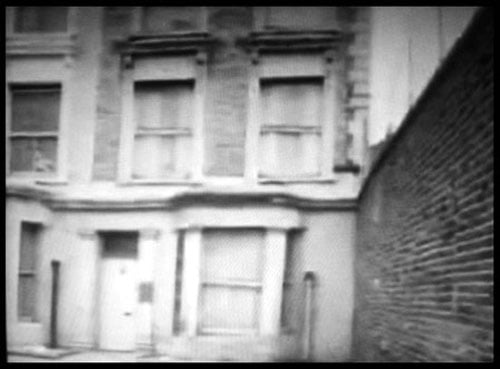Eye Candy (4)
By:
September 9, 2011
Today’s Eye Candy is more and less than it appears to be. For example, take this visually nondescript photograph of a city square. A little monochrome, a little blurry — that’s London all over. Or is it? Because run through artist and “anarchitect” John Wild’s Java-eye view, every time you look at this image, a pixel is subtracted. Active looking destroys the object of its gaze.

And that might be a good thing.
A photograph of 10 Ruston Close, formally 10 Rillington Place, will be both projected within the gallery and is accessible online now. Each time the image is viewed, either online or within the space, a single pixel will be removed from the image. Over the period of the exhibition the image will decompose directly in response to the number of views it receives.
The significance of this particular address in Notting Hill, and the impulse for its erasure by repaving, rebuilding, and renaming, may be unknown to the reader. It was the address of a British serial killer from the 1940s-50s, John Christie, a visually nondescript WWI veteran and psychopath, who killed 8 women at home, including his own wife, between the odd cup of tea. And embedded their remains right there: he hid some of the bodies in a cupboard; his wife he placed under the floor, and he interred still others in the garden, where bones were clearly visible to police and neighbors. He used gas to render his victims unconscious, then, well, rendered them.
The Traumatic events, which we so readily identify with the location and architecture of 10 Rillington Place, lead to an attempt by developers to repress the memory through the disappearance of the architecture itself. First by changing the name of the street to Ruston Close, then the eventual demolition of the house and the redesigned of the area to purposely obscure the position and layout of the old road. Thereby preventing a newly built house being readily identifiable as occupying the same plot upon which the old house once stood.
In fact, the more one learns about this particularly unedifying bit of local history, the more one thinks it is not possible to whitewash same (and improve the property values) by simply changing the name, or even building a new structure in that location. Sometimes places are just too saturated with evil; sometimes even after the people are long gone and the deeds are committed to history, the places remember.
Maybe we should just tear the whole thing down.

Well, exactly.
Go see for yourself: online (requires Java plugin): 10-ruston-close.com
Project was also on view as an installation at Great Western Studios, London, Aug 15 – Sept 6, 2011.
Thanks to @LRJP! and The New Aesthetic for linkage.
